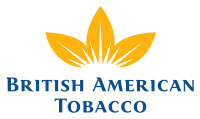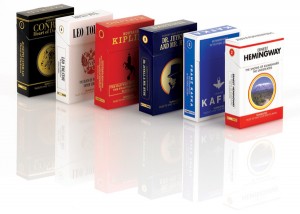This week our government committed itself to the removal, albeit slowly, of cigarette displays in shops. But plain packaging on cigarettes has been delayed for further consultation.
The Unite union is unimpressed. It represents 6,000 people in tobacco production and distribution, and put out a statement: “Switching to plain packaging will make it easier to sell illicit and unregulated products, especially to young people.” This, the union added, “may increase long-term health problems”.
Tory MP Philip Davies said: “Plain packaging for cigarettes would be gesture politics … it would have no basis in evidence.”
Everyone is entitled to their own opinions, but not, sadly, their own facts. Cigarette packaging has been used for brand-building and sales expansion, and that is bad enough; but it has also been used for many decades to sell the crucial lie that cigarettes which are “light”, “mild”, “silver”, and the rest, are somehow safer.
This is one of the most important con tricks of all time: people base real decisions on it, even though low-tar cigarettes are just as bad for you as normal cigarettes, as we have known for decades. Manufacturers’ gimmicks, like the holes on the filter beside your fingers, confuse laboratory smoking machines, but not people. Smokers who switch to lower-tar brands compensate with larger, faster, deeper inhalations, and by smoking more cigarettes.
The collected data from a million people shows that those who smoke low-tar and “ultra-light” cigarettes get lung cancer at the same rate as people who smoke normal cigarettes. They are also, paradoxically, less likely to give up smoking.
So the “light”, “pale” and “mild” packaging sells a lie. But do people know this? In data from two population-based surveys, a third of smokers believed incorrectly that “light” cigarettes reduce health risks, and were less addictive (it’s 71% in China (pdf)). A random telephone-digit survey of 2,120 smokers found they believed on average that “ultra lights” convey a 33% reduction in risk. A postal survey of 500 smokers found a quarter believed “light” cigarettes are safer. A school-based questionnaire of 267 adolescents found once again, as you’d expect, that they incorrectly believed “light” cigarettes to be healthier and less addictive.
Where do all these incorrect beliefs come from? Careful manipulation by the tobacco industry, as you can see for yourself, in their internal documents available for free online. They explicitly planned to deter quitters with “mild” products, which were made to seem safer and less addictive.
But more than 50 countries, including the UK, have now banned a few magic words like “light” and “mild”. So is that enough? No. A survey of 15,000 people in four countries (pdf) found that after the UK ban, there was a brief dip in false beliefs, but by 2005 we bounced back to having the same false beliefs about “safer-looking” brands as the US.
This is because
brand packaging continues to peddle these lies. A street-interception survey (pdf) from 2009 of 300 smokers and 300 non-smokers found that people think packages with “smooth” and “silver” in the names are safer, and that cigarettes in packaging with lighter colour, and a picture of a filter, were also safer.
Of course
tobacco companies know this (pdf). As the
Philip Morris tobacco company said in an internal document, entitled Marketing New Products in a Restrictive Environment: “Lower delivery products tend to be featured in blue packs. Indeed, as one moves down the delivery sector, then the closer to white a pack tends to become. This is because white is generally held to convey a clean, healthy association.”
If you’re in doubt of the impact this can have, “brand imagery” studies show that when participants smoke the exact same cigarettes presented in lighter coloured packs, or in packs with “mild” in the name, they rate the smoke as lighter and less harsh, simply through the power of suggestion. These illusory perceptions of mildness, of course, further reinforce the false belief that the cigarettes are healthier.
But these aren’t the only reasons why banning a few words from packaging isn’t enough. A study of 600 adolescents, for example, found that plain packages increase the noticeability, recall, and credibility of warning labels.
There’s no real doubt that the extended, complex, interlocking branding and packaging machinations of
cigarette companies play a big role in misleading smokers about the risks, by downplaying them, and sadly nothing from Unite – for shame – or some Tory MP will change that.
If you don’t care about this evidence, or you think jobs are more important than people killed by cigarettes, or you think libertarian principles are more important than both, then that’s a different matter. But if you say the evidence doesn’t show evidence of harm from branded packaging, you are simply wrong.











